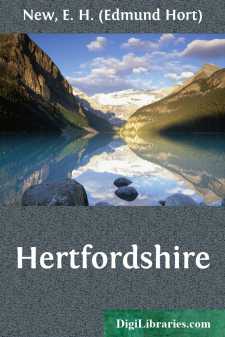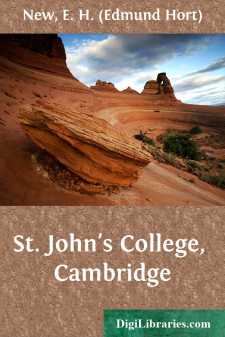Categories
- Antiques & Collectibles 13
- Architecture 36
- Art 48
- Bibles 22
- Biography & Autobiography 813
- Body, Mind & Spirit 142
- Business & Economics 28
- Children's Books 15
- Children's Fiction 12
- Computers 4
- Cooking 94
- Crafts & Hobbies 4
- Drama 346
- Education 46
- Family & Relationships 57
- Fiction 11828
- Games 19
- Gardening 17
- Health & Fitness 34
- History 1377
- House & Home 1
- Humor 147
- Juvenile Fiction 1873
- Juvenile Nonfiction 202
- Language Arts & Disciplines 88
- Law 16
- Literary Collections 686
- Literary Criticism 179
- Mathematics 13
- Medical 41
- Music 40
- Nature 179
- Non-Classifiable 1768
- Performing Arts 7
- Periodicals 1453
- Philosophy 64
- Photography 2
- Poetry 896
- Political Science 203
- Psychology 42
- Reference 154
- Religion 513
- Science 126
- Self-Help 84
- Social Science 81
- Sports & Recreation 34
- Study Aids 3
- Technology & Engineering 59
- Transportation 23
- Travel 463
- True Crime 29
Hertfordshire
Description:
Excerpt
INTRODUCTION
I. Situation, Extent and Boundaries
Hertfordshire, or Herts, is a county in the S.E. of England. On the S. it is bounded by Middlesex; on the S.W. by Buckinghamshire; on the N.W. by Bedfordshire; on the N. by Cambridgeshire; on the E. by Essex. Its extreme measurement from due E. to W., say from Little Hyde Hall to Puttenham, is about 38 miles; from N. to S., from Mobb’s Hole at the top of Ashwell Common to a point just S. of Totteridge Green, about 30 miles; but a longer line, 36 miles in length, may be drawn from Mobb’s Hole to Troy Farm in the S.W. Its boundaries are very irregular; the neighbourhood of Long Marston is almost surrounded by Buckinghamshire and Bedfordshire, that of Hinxworth by Cambridgeshire and Bedfordshire, and that of Barnet by Middlesex. Its extreme points are:—
N.Lat.52°5´(N.)E.Long.0°13´(E.)W.Long.0°45´(W.)S.Lat.51°36´(N.)Its area is 404,523 acres or 632 square miles. It is one of the smallest counties in England, the still smaller counties being Rutland, Middlesex, Huntingdon, Bedford and Monmouth. Hertfordshire is one of the six home counties.
LEAFLESS BEECHES IN NOVEMBER, ASHRIDGE WOODS
Hertfordshire, being an inland county, is naturally devoid of many charms to be found in those counties which have a sea-coast. But it has beauties of its own, being particularly varied and undulating. Its scenery is pleasantly diversified by many woods, which however are mostly of but small extent, by swelling cornfields, and by several small and winding streams. There is much rich loam in the many little valley-bottoms traversed by these streams, and other loams of inferior quality are found in abundance on the higher levels of the arable districts. The soil in many parts, owing to the preponderance of chalk, is specially adapted to the cultivation of wheat. Its trees have elicited the admiration of many, particularly its oaks and elms, of which colossal specimens are found here and there throughout the county, and its beeches, of which the beautiful woods on the Chiltern slopes and elsewhere in the W. are largely composed. The hornbeam is almost restricted to Essex and Hertfordshire. The woods of Hertfordshire form indeed its sweetest attraction in the eyes of many. The districts of Rickmansworth, Radlett, Wheathampstead and Breachwood Green, among others, are dotted with coppices of ideal loveliness, and larger woods such as Batch Wood near St. Albans and Bricket Wood near Watford are carpeted with flowers in their season, interspersed with glades, and haunted by jays and doves, by ringlets and brimstones. Hazel woods abound, and parties of village children busily “a-nutting” in the autumn are one of the commonest sights of the county. It abounds, too, in quiet park-like spots which are the delight of artists, and contains many villages and hamlets picturesquely situated upon slopes and embowered among trees. A large proportion of the birds known to English observers are found in the county either regularly or as chance visitors, and will be treated more fully in a separate section....




